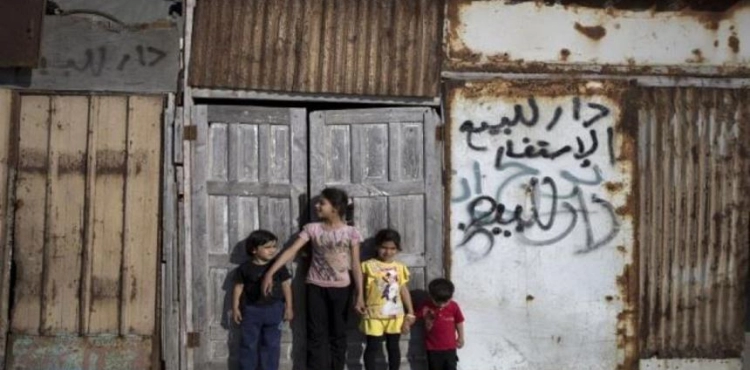"Social Development" in the Gaza Strip, on Sunday, revealed shocking figures on the living reality of the population of the Gaza Strip in light of the high rates of poverty and unemployment.
On the occasion of the International Day for the Eradication of Poverty, Undersecretary Ghazi Hamad explained that the indicators of poverty in Gaza are the highest in the world, with the economic situation deteriorating due to the Israeli aggression that has accumulated since 2000, and its escalation with the siege of the sector in 2006 and restricting the movement of citizens and goods. Who created a complex and difficult political, economic and social reality.
He pointed out that the rate of poverty and unemployment reached 75% this year in Gaza, while 70% of the total population of the Gaza Strip have become food insecure, 33.8% are below the extreme poverty line, and 65.6% of poor families are refugees.
He pointed out that the number of beneficiaries of the services of the "Palestinian National Program for Social Protection" until last July, amounted to 70645 families, 425292 individuals, representing 20% ​​of the population of the Gaza Strip fall below the extreme poverty line according to the means of livelihood examination (PMTF) used in the ministry About 12,000 families are on waiting lists to date.
According to the data, 46910 families are 276,663 refugees, and these families were evicted from their homes and properties by the occupation in 1948.
Hamad pointed out that 37% of the beneficiaries of the program are headed by women, while the number of families benefiting from the cash transfer program is about 70 thousand families, of which about 26 thousand families headed by women.
It was reported that 15% of female heads of households benefiting from the National Social Protection Program are widows, and 24.7% of members of poor families are children.
The number of widow heads of household was 10,719, 3298 were divorced, 725 were separated.
According to the data, the number of children from poor families (under 18 years) is 104,992.
Hamad pointed out that a large number of residents of the Gaza Strip are forced to buy food and drinking water through debt because of poor food funding for poor families and the lack of safe drinking water.
He pointed out that 32.5% of the beneficiaries of the Palestinian National Program for Social Protection receive ration assistance, while the number of families benefiting from the ration assistance program reached about 23000 families, 29.5% of the elderly headed poor families.
According to data, 20,856 elderly people (60 years and over) headed poor families in the Gaza Strip, and the number of elderly members of poor families about 36072 elderly.
Hamad said that 56.5% of heads of poor families suffer from at least one chronic disease, approximately 39914 heads of poor families, and about 70.8% of poor families have at least one chronic patient, 12.8% of heads of poor families. Are people with disabilities.
According to data, 9009 poor heads of households are persons with disabilities, 66.2% of heads of poor families have less than secondary education, and 46,809 poor heads of households.
He pointed out that the efforts exerted by governmental, international and local institutions are predominantly relief, pointing out that these institutions meet only about 50% of the basic needs of poor families, in light of the rapid changes that stand in the way of any development efforts.
He stressed the need for independence by humanitarian decision away from political tensions, and to improve the living environment of the people of the Gaza Strip;
He stressed the importance of activating programs for marginalized groups in the West Bank in the Gaza Strip, and improving the quality of services provided by the Ministry of Social Development, as well as working to empower poor families through granting them a range of educational, health and economic facilities.












